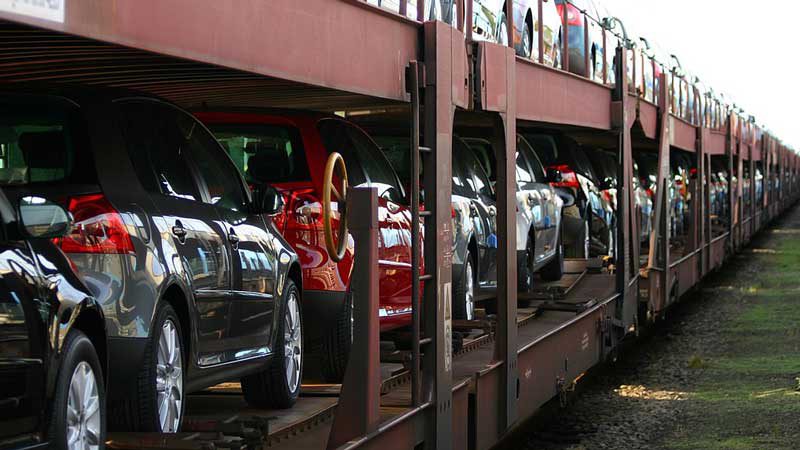On Monday, we wrote about the changes in investor thinking that had pushed the value of Tesla to the point where it has already become the most valuable car company in the world, even though it had barely one thirtieth of its predecessor, Toyota’s, new car sales in 2019.
The focus is very much on the future, and what is likely to happen when the “ticket price” of electric cars falls closer to that of their petrol and diesel equivalents, spurred on new emission standards, technology progress and customer preference.

In that story we included this remarkable graph, courtesy of Professor Ray Wills from Future Smart Strategies (and a director of Horizon Power and an adjunct professor at UWA). See It’s taken Tesla just 10 years to end Ice Age for Big Auto and Big Oil
It sparked a lot of interest, so we decided to find out more. Is this just a wild prediction? And how does Wills back up his forecast?
This is what Wills told us.
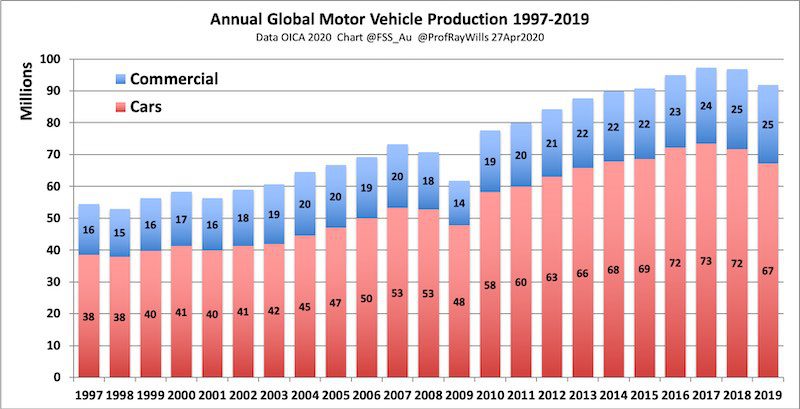
Sales of internal combustion engine cars have been falling consistently and every month since the end of 2017. That is, car sales appear to have peaked in 2017. In, 2018 new car sales globally were lower than 2017, and in 2019 it was lower than 2018. (June 2020 is the first rise in that whole time, off the back of COVID19 lows in April and May.
In the mix, hybrid sales have improved – but not to such an extent that would suggest that a breakout and swap from ICE (internal combustion engine) to hybrid is in the offing.
A laggard response by Toyota to electrification and a push by Toyota for hybrid sales as an alternative to battery electric vehicles simply reflects their dominance in that sector.
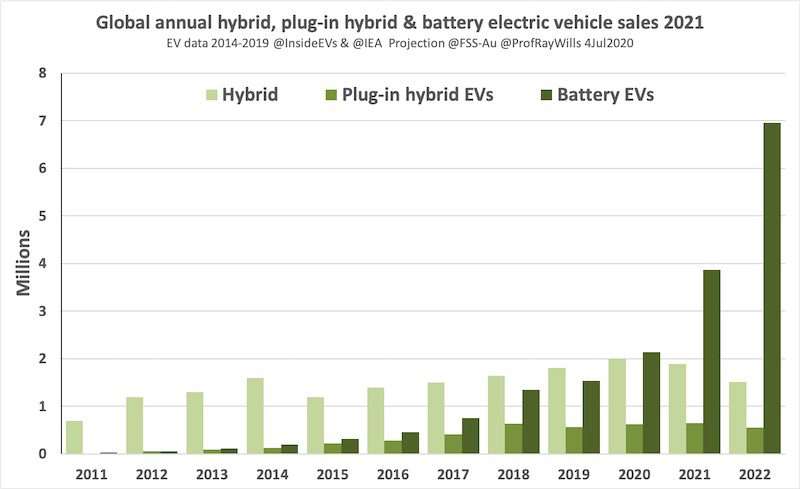
Meanwhile, EV sales are still growing at a rapid rate – despite Covid-19 – and will overtake hybrid sales this year. And those customers looking for electric vehicles are simply not looking for hybrid solutions, which explains why plug-in hybrids haven’t been more popular.
While sales of some models of electric car sales have slowed a little during Covid-19, lead models like Tesla have not stalled, and overall growth of comparative market share of electric vehicles is still positive.
The continuing erosion of ICE sales through 2020 as the Osborne Effect continues to impact on overall car sales will convince car makers to release EV models faster.
(The Osborne effect is a social phenomenon of customers canceling or deferring orders for the current soon-to-be-obsolete product as an unexpected drawback of a company’s announcing a future product prematurely. Remember it!).
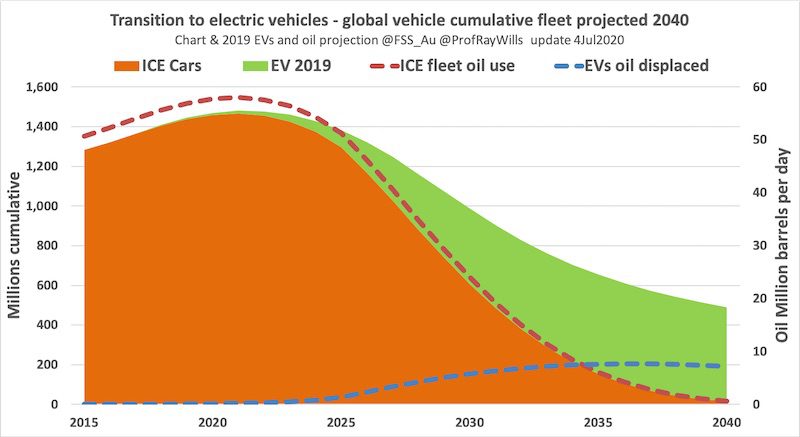 And when they do, there will be greater tension on pricing. All major car makers have at least one model of electric vehicle, and have factories able to be retooled to produce electric cars rather than ICE cars.
And when they do, there will be greater tension on pricing. All major car makers have at least one model of electric vehicle, and have factories able to be retooled to produce electric cars rather than ICE cars.
(See Volkswagen factory produces last ever combustion engine car, shifts to EVs only).
Once traditional manufacturers get on with it and retool, the arrival of greater volumes of more affordable EVs will carry the day.
And these new electric cars don’t actually compete with other EVs – and the don’t threaten Tesla (there is no “Tesla killer”). More EVs simply replace ICE. And it seems a short supply means new EVs actually leaves ICE cars unsold, not other EVs.
We at Future Smart Strategies are still anticipating the early arrival of autonomy, particularly as many vehicles now come with the hardware installed, and higher levels of autonomy in many cases will simply require a software upgrade.
And, finally, to autonomy. It forms the largest part of the coming disruption to motor vehicles.
Autonomy will change market in a way most find unimaginable – an inevitable erosion of vehicle fleet: adoption of autonomy raises vehicle utilisation rates and, despite a decline of fleet size by more than half, we will see more road miles per vehicle and more road miles overall.
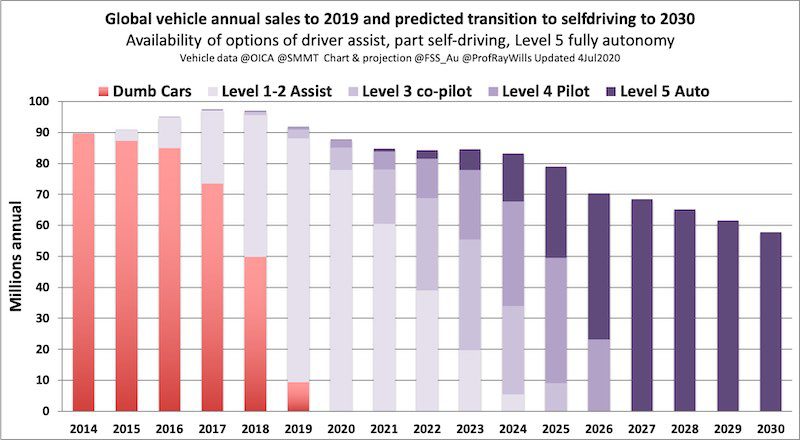
Autonomy and electrification are unrelated tech, but will bring mutual boost in the replacement of the existing fleet – and a faster turnover of fleet brings safety up for everyone on the road. Look how quickly level 1 and 2 assist spelled the end of “dumb cars” – it took just four years (graph above).
We are seeing most new electric vehicles are safer across multiple metrics than new ICE cars. After 100 years to make cars as safe as possible, cars have so far only been made little safer.
But EVs also bring crash-safety revolution via the latest driver assist being included in the new vehicles, systems that can then be upgraded to higher levels of autonomy via software updates.
This revolution will save lives – the majority of humans are bad drivers, and invariably will make poor choices on the road, while autonomous vehicles will make safer choices for us.

Giles Parkinson is founder and editor of The Driven, and also edits and founded the Renew Economy and One Step Off The Grid web sites. He has been a journalist for nearly 40 years, is a former business and deputy editor of the Australian Financial Review, and owns a Tesla Model 3.

